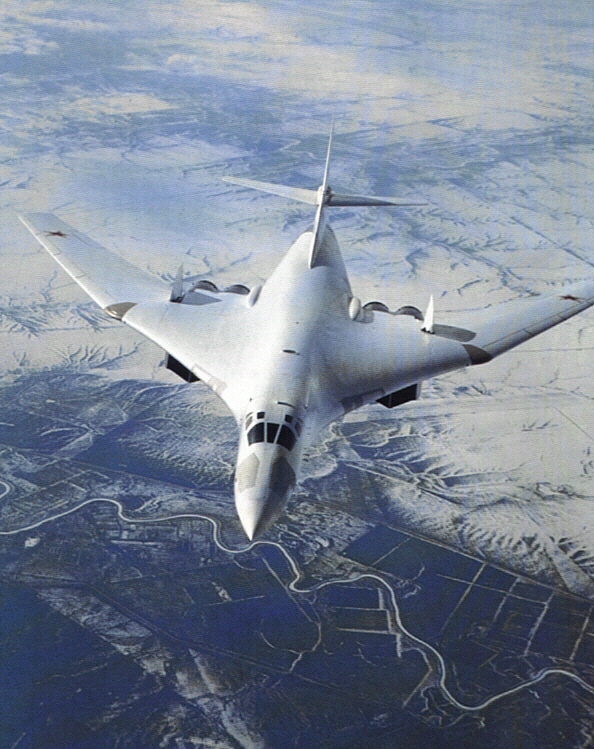Thursday, October 23, 2008
Russia Sends Out The Nuke Bombers For Week Long Exercises
Russia Sends Out The Nuke Bombers For Week Long Exercises
(NSI News Source Info) Washington - October 23, 2008: Russia's front-line long-range strategic nuclear bombers have carried out a new series of major weeklong exercises, the Russian air force announced last week.
The operations were carried out within the framework of the Stability-2008 strategic command and staff exercises, from Oct. 6-12 under the command of three-star Col. Gen. Alexander Zelin, the commander in chief of the Russian air force. More than 30 bombers were involved, the RIA Novosti news agency reported.
"A total of 40 sorties have been flown with an aggregate of 300 flying hours clocked," according to Maj. Gen. Pavel Androsov, commander of Russian Long-Range Aviation Forces.
The Stability-2008 operations have been carried out all over the huge Russian federation and the former Soviet republic of Belarus to improve the strategic deployment of the Russian armed forces, including the nuclear triad of land-, submarine- and air-launched nuclear missiles. They began on Sept. 22 and were scheduled to conclude Tuesday, Oct. 21, the report said.
The Oct. 6-12 component of the exercise involved Tupolev Tu-160 White Swans (NATO designation Blackjack) and Tupolev Tu-95MS (NATO designation Bear-H). The aircraft operated carrying full combat payloads and, as planned, fired all of their standard-issue X-55 air-launched cruise missiles -- ALCMs. It was the first time cruise missiles had been live-fired from Russian bombers in major tactical exercises in nearly a quarter-century since 1984, during the last major flare-up of the Cold War between the United States and the Soviet Union.
Tupolev Tu-95MS Bears have a payload of six KH-55 (NATO designation AS-15 Kent) long-range cruise missiles, and the gigantic Tu-160s, with their 99,000-pound payload -- twice that of a U.S. B-2 Stealth bomber -- has a payload of 12 KH-55s, RIA Novosti said.
The Russian air force described the scale of the Oct. 6-Oct. 12 operations as unprecedented, RIA Novosti said. The maneuvers also included Tupolev Tu-22M3 Backfire strategic bombers, air superiority fighters, interceptors and aerial tankers, the report said.
RIA Novosti said the Russian air force was believed to currently be operating 16 Tu-160 Blackjack bombers, 40 Tu-95MS Bear bombers and 141 Tu-22M3 Backfire bombers.
In an earlier RIA Novosti report previously cited in these columns, the former Russian air force commander, four-star General of the Army Pyotr Deynekin said Tu-95 Bear bombers had carried out live-firing of all their cruise missiles only on one previous occasion in all their operational service, in 1984.
"Tu-160 bombers have never done this, because it is very expensive," the general said.
Aerojet wins Kill vehicle DACS contractAerojet, a GenCorp company, announced Oct. 13 it had won a contract for the Kill Vehicle -- KV -- Commonality Pathfinder Divert and Attitude Control System -- DACS -- from the U.S. Missile Defense Agency.
The Sacramento, Calif.-based Aerojet said its propulsion system could direct the KV through the firing of individual thrusters as the KV was heading to hit a ballistic missile or its warhead. The company will now construct and perform integration work on a test KV DACS. Then the DACS system and the reliability of its technical components, what the company calls "component technical maturity," will be checked out in a static hot-fire test before it is incorporated into a KV configuration and simulated flight test.
"Aerojet is proud to offer more than 20 years of hardware development, qualification and production under MDA programs," said Aerojet's Manager of Programs Warren Yasuhara. "Our experience results in high mission assurance and a low-cost approach for future applications."
Boeing wins new deal for more ATL testsBoeing announced Oct. 14 it had won a new $30 million U.S. Air Force contract to carry on with tests of the Advanced Tactical Laser.
The company said in a statement that it had signed a new Extended User Evaluation contract with the Air Force's Air Armament Center on Sept. 30 "to operate and maintain the ATL system, enabling the Air Force and other potential users to assess ATL's capabilities."
Boeing's ATL is a Lockheed Martin C-130H Hercules military transport aircraft that has been adapted to carry a high-energy chemical laser and beam control system. The ATL is to be subjected to a new program of ground and flight tests during the EUE process. Boeing described its new EUE contract as "a follow on" to the Advanced Concept Technology Demonstration contract that was awarded previously to Boeing to create and perform integration work on the ATL system.
"The Extended User Evaluation will expand the envelope of the Advanced Tactical Laser and further demonstrate how this ultra-precision engagement capability can significantly reduce collateral damage," said Scott Fancher, vice president and general manager of Boeing Missile Defense Systems. "ATL has the potential to perform a wide range of important missions for the war fighter."
"The Extended User Evaluation will give the war fighter the opportunity to conduct hands-on operation of ATL and determine how this transformational laser-gunship technology can be integrated into the battlefield," said Gary Fitzmire, vice president and program director of Boeing Directed Energy Systems.
The ATL system is designed to hit its designated targets with pinpoint accuracy, vastly reducing the dangers of collateral damage, especially in heavily populated urban environments.
Boeing's ATL industry team has L-3 Communications/Brashear, the company that constructed the laser turret, and HYTEC Inc., the firm that constructed some of the structural elements of the weapon system.

No comments:
Post a Comment